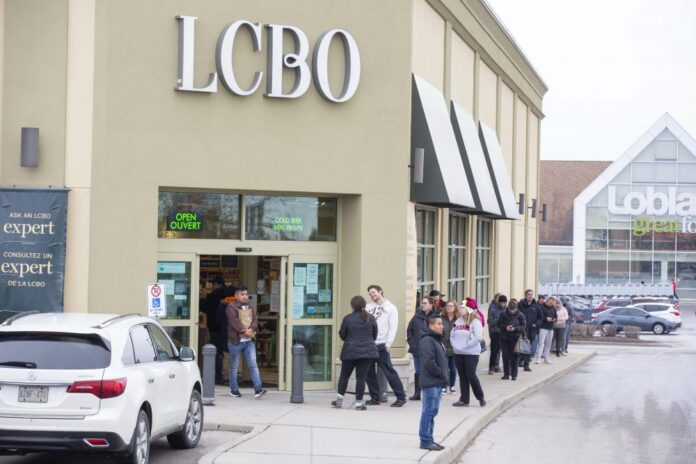ISLAMABAD: China on Tuesday released a batch of economic data for July, including industrial output and retail sales, which highlighted persistent downward pressure even as the Chinese economy continues on a recovery trend from the three-year COVID-19 pandemic.
In the face of weak domestic and external demand and other challenges, Chinese officials vowed to step up policy support to ensure that the world’s second-largest economy will achieve both effective improvement in quality and reasonable growth. Highlighting such a determination, the country’s central bank on Tuesday unexpectedly cut key policy interest rates, in an apparent bid to boost the economy.
While the July data for industrial output, retail sales and fixed-asset investments missed forecasts by some foreign media outlets, Chinese analysts said July and August are usually down season for economic activity and that recent policy measures will only start to kick in and lead to a more pronounced rebound at the end of the third or fourth quarter.
In July, value added industrial output expanded by 3.7 percent year-on-year, slowing from a 4.4-percent growth seen in the previous month, according to the National Bureau of Statistics (NBS) on Tuesday. Retail sales grew 2.5 percent year-on-year, compared to a 3.1 percent growth in June. Also, fixed-asset investment rose 3.4 percent year-on-year in the first seven months of 2023, slowing from a 3.8-percent growth in the first half of 2023, according to the NBS.
“Overall, in July, the national economy continued to recover, and high-quality development made solid progress. But we must also see that the world’s political and economic situation is complicated, domestic demand is still insufficient, and the foundation for economic recovery still needs to be strengthened,” Fu Linghui, a spokesperson for the NBS, told a press conference on Tuesday.
While repeatedly acknowledging challenges in China’s economic recovery, Fu also maintained that the slowdown in the growth rate of some major indicators in July is a normal fluctuation between months, pointing to some bright spots in the economy. The services sector saw relatively robust growth in July, with the service production index growing 5.7 percent year-on-year.
The sub-index for lodging and eatery jumped 20 percent year-on-year. Also, output of solar cells jumped by 65.1 percent year-on-year, and that of new-energy vehicles rose 24.9 percent year-on-year.
“Judging from the data, the growth rates in industrial output, household consumption and investment were lower than expected, indicating that the recovery momentum of the domestic economy remains on the weak side,” Zhou Maohua, an economist at Everbright Bank, said on Tuesday, noting such a situation explains a largely unexpected move by the central bank on Tuesday to cut rates.
The People’s Bank of China (PBC) on Tuesday lowered key policy interest rates, in an effort to boost economic activities. Specifically, the PBC reduced the rate on one-year loans, known as the medium-term lending facility (MLF), by 15 basis points to 2.5 percent. Meanwhile, the central bank also lowered the seven-day reverse repurchase rate, a short-term policy rate, by 10 basis points to 1.8 percent.
In a brief statement, the PBC said the move was taken to hedge against the impact of factors such as tax season peaks and maintain reasonable and sufficient liquidity within the banking system. The amount of money involved in Tuesday’s move totaled 605 billion yuan ($83.03 billion) — 401 billion yuan in one-year MLF and 204 billion yuan in seven-day reserve repo.
The move was widely applauded by analysts who said that “the two rate cuts in a day” underscored the country’s determination in taking necessary policy measures to ensure stable growth amid lingering downward pressure.
“The rate cuts have sent a positive signal that the central bank is seeking to boost market confidence through lower MLF rate, which will generate positive momentum within the stock market and property market,” Yang Delong, chief economist at Shenzhen-based First Seafront Fund Management Co, said.
More importantly, the PBC move on Tuesday further raised expectation for broader monetary policy support, including possible cuts to interest rates and the reserve requirement ratio, to boost economic growth in the second half of 2023.
China has recently issued a slew of measures to boost various aspects of the Chinese economy, including the private economy and consumption. Chinese officials and analysts said effectively executing those policy measures will be key to ensuring stable recovery in the second half of the year.
Latest data showed that the recent series of measures are appropriate and necessary, and it is now up to “all departments and all localities to fully implement them and turn them into concrete results,” He Weiwen, a senior research fellow at the Center for China and Globalization, said, noting that with the policy measures starting to kick in, there will be a “turnaround” in the second half.
China has set a GDP growth target of around 5 percent for 2023. In the first half of 2023, the Chinese economy grew by 5.5 percent year-on-year, which means a growth rate of 4.5 percent in the second half of the year is required to meet full-year target. Some institutions also expect even faster growth rate for China. The IMF, in its latest forecast, expect a 5.2-percent growth for the Chinese economy despite challenges.
Fu, the NBS spokesperson, on Tuesday also pushed back against claims of deflation in the Chinese economy, and said while the Chinese economy faces challenges such as insufficient demand, its long-term positive fundamentals have not changed thanks to China’s vast domestic market potential, solid industrial foundation and other advantages.
“With the strengthening of the endogenous driving force of the economy and the strengthening of macro-policy regulation, the economy is expected to continue to recover and improve,” Fu concluded.






















